Despite the wide popularity and a large number of recipes for its use, the usual homemade aloe flower can bring not only benefits, but also harm. Few people know what contraindications it has, and before use they should be studied. Growing a plant at home does not require much effort, but its benefit when used correctly is very great.
Content
Characteristics of Aloe and Flower Varieties
Aloe is a succulent plant from the Asphodel family. The genus Aloe has about 500 species, but only 3 are widespread in indoor floriculture.
Aloe is a perennial. Its leaves are collected by a basal rosette. The growth of the plates occurs in a spiral. The leaves have a xiphoid shape. On the edge of the plates are sharp spikes or soft cilia. The color of the leaves is represented by shades of green. There are species with bicolor, green-white leaves.
Aloe inflorescences are tubular. They are located on a long peduncle. The color of the flowers depends on the species of the plant. It can be represented in shades of yellow, orange, white and red. Inflorescences have no aesthetic value.
Due to the ability to accumulate moisture in the leaves, aloe is a very life-sustaining plant. The following types of plants can be grown at home.
| View name | Stem | Maximum height cm | Leaf characteristics | ||
|---|---|---|---|---|---|
| Maximum length, cm | Color | Edge | |||
| Tree-like | Pronounced | 100 | 20 (25) | Dark green | Toothed |
| Motley | Very short | 40 | 30 | Bright green with white touches and specks. | Without teeth |
| Vera | Very short | 40 | 50 | Smoky green | Toothed |
The most common type is Aloe Vera.
The benefits and harms of a home flower
Agave has a lot of useful properties. The leaves and juice of the plant are used for medicinal purposes. The juice and pulp of a three-year-old plant, which is harvested in late autumn, is considered the most effective.
Using a flower, they treat:
- constipation, including chronic;
- infectious skin diseases, furunculosis;
- festering wounds;
- streptococcal and staphylococcal infections;
- intestinal, typhoid, dysenteric bacillus;
- anemia;
- metabolic problems;
- burns and some skin diseases;
- various forms of neurosis;
- bronchial asthma;
- chronic gastritis and gastric ulcer;
- eye diseases.
However, abusing aloe is not worth it. This is especially true for the internal use of flower-based products. With prolonged use of drugs based on the agave, leaching of potassium occurs, which leads to metabolic disorders. Women during pregnancy should not take aloe because of the risk of miscarriage.
The internal intake of aloe is contraindicated for people suffering from diabetes, since the plant tends to lower blood sugar. In combination with insulin, the patient may develop hypoglycemia. Plant-based preparations are contraindicated in people with diseases of the liver, gall bladder, as well as with cystitis and hemorrhoids.
Aloe Recipes
There are many recipes for preparing medicines using plants. But due to the presence of a number of contraindications to the use of the agave, you should obtain the approval of a doctor before taking it.
For heart
Aloe juice is used to relieve pain in the region of the heart. In the evening, 2 tablespoons of hawthorn and crushed strawberry leaves are placed in a thermos. All pour a liter of boiling water and leave to insist all night.
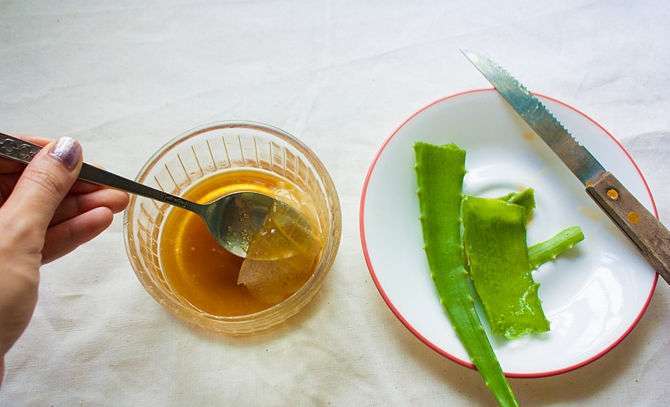
For the liver
For the prevention of liver diseases, use the pulp of a century. To do this, pour a teaspoon of nettle root 200 ml of hot water and leave to infuse for 4 hours. While the nettle is infused, a nettle and St. John's wort are put in a separate saucepan on a tablespoon. All pour 200 ml of boiling water and boil for 20 minutes. The broth is drained after an hour to give him the opportunity to infuse.
Ready broth and infusion are mixed. They also add a tablespoon of chopped aloe pulp and the same amount of linden honey. The tool is used three times a day before meals. The optimal dosage is 1/3 cup.
Cough and runny nose
For the treatment of cough, aloe juice is mixed with honey and lingonberry juice in equal proportions. The medicine is taken in a tablespoon 3-4 times a day.
With a cold, an aloe vera extract is used. 5 drops of the drug are instilled into each nostril. The procedure is repeated 2-3 times a day. You can also make the medicine yourself - 3 drops of plant juice per 10 drops of water, instill two drops three times a day.
In gynecology
Women with acute inflammatory processes of the genital organs should take the tincture of the plant three times a day for half an hour before eating 30-40 drops. The tincture is prepared as follows: for 100 g of leaves, previously aged in the refrigerator, half a liter of alcohol is taken. After 10 days, the product is ready for use.
Shredded leaves of the plant, mixed with goose fat and sea buckthorn oil, treat infertility. To do this, leave the mixture for a week in a cool dark place, and then take 1 tablespoon three times a day with a glass of hot milk.
In cosmetology
In cosmetology, a flower is used to make acne masks and anti-inflammatory masks. Fresh leaves, together with egg white, are crushed to obtain a homogeneous gruel. Then a couple drops of lemon juice are added to the mixture for 30 minutes. applied to the spot with acne.
To relieve skin inflammation, plant juice is added to white or blue cosmetic clay. The mask is applied for 15 minutes, then washed off with cool water.
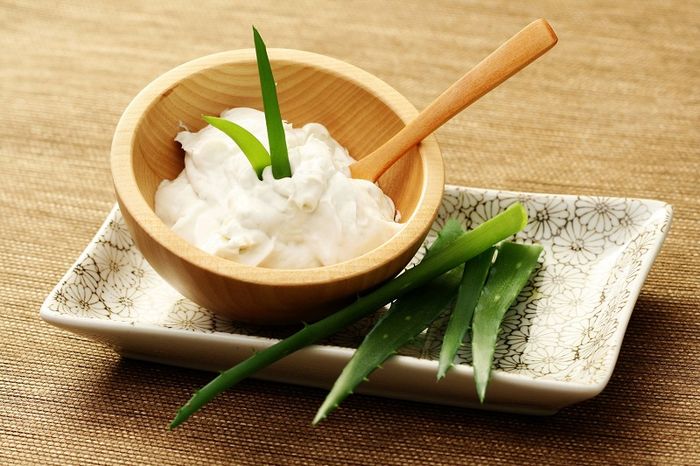
Secrets and difficulties of home growing
Growing aloe is not at all difficult. The flower is so unpretentious that it is a pleasure to take care of it. Agave refers to a few indoor plants that do not need to be fed fertilizers.
Temperature and light
The acceptable temperature for normal plant life is considered to be a range from 12 to 30 ℃. It is advisable that in the cold season, the room temperature does not exceed 20 ℃.
Aloe is very fond of light. Therefore, if possible, it is placed on the windowsills of windows that face south. To avoid sunburn during high solar activity, the flower is shaded with a curtain. In summer, aloe is best taken to the garden or balcony.
Watering Rules
Proper watering management plays a key role in aloe cultivation. Water the flower in this way:
- From April to mid-October, the flower is watered as the topsoil dries. The rest of the year, it is watered no more than 1 time per month.
- The upper watering is alternated with the lower (through the pan).
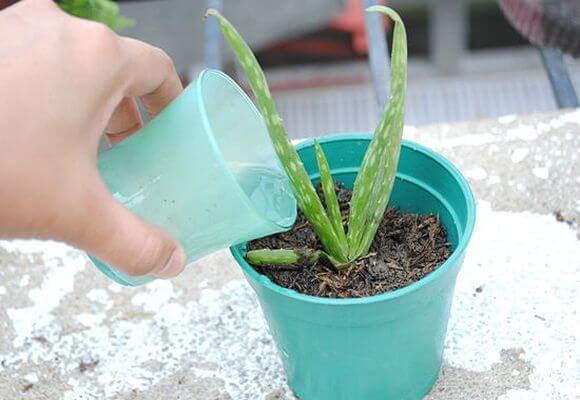
Watering a flower - As it becomes dirty, the leaves of the flower must be cleaned of dust. To do this, use a wet towel. In prickly species, dust can accumulate in the area of spikes, so it is not superfluous to arrange a monthly shower under running water under a flower.
- It is better to use rainwater for irrigation. If this is not possible, it is advisable to let household water from the tap through the filter.
- The temperature of water for irrigation should be as close as possible to the air temperature in the room.
How to propagate and transplant a flower at home?
Aloe is propagated by cuttings and separation of basal processes. Propagation by cuttings can be carried out all year round, and the processes are separated, as a rule, during transplantation.
The material for the cuttings is an aloe leaf. It is cut off, treated with crushed activated or charcoal and left to dry a little. Then the sheet is placed in the wet sand by the cut point. Aloe cuttings do not need greenhouse conditions, so they are usually not covered with glass or plastic wrap. Daily sandy soil is moistened by spray irrigation. As soon as the stalk starts up the first roots, they begin to water it in the usual way.

Propagation by root processes is an easier way to breed a new plant. The processes are carefully separated from the mother bush. Fracture places must be treated with an antiseptic. The processes are planted in separate pots and looked after as adult aloe.
The young flower requires an annual transplant, and adult plants can be left in the old substrate for 2-3 years. Experts recommend a procedure in the fall.
Aloe transplant consists of the following:
- Pot selection. The flowerpot must be taken deep and wide enough. Bottom must be located drainage holes and a removable tray.
- Drainage layer. A drainage layer consisting of expanded clay or coarse sand is lined at the bottom of the pot.
- Landing. The required soil layer is applied to the drainage layer. Then the plant is lowered into the pot and the remaining voids of the flowerpot are gently filled with soil. The topsoil is moistened.
The soil for aloe can be purchased at flower shops or prepared independently. To do this, mix sand with turf and leafy soil in a ratio of 1: 1: 1.
Diseases and Pests
Agave has good immunity. All diseases that a flower can undergo are caused by a person. The most common diseases are the following ailments:
| Disease name | Causes of occurrence | Symptoms | Treatment methods |
|---|---|---|---|
| Root rot | Excessive watering | Growth retardation, rotting at the base of the stem, drying out of the tips of the leaves. | Cutting rot-damaged places and fungicide treatment. |
| Dry rot | Improper care | External symptoms are absent. The plant dries quickly in the last stage of the disease. | Are absent |
Wilted leaves indicate a lack of light, and sluggish plates that have lost turgor indicate that the agave is frozen.
A low level of importance of air can cause damage to the flower by scutes. You can notice insects in the tracks that they leave on the inside of the leaf. Small brown spots that are easily rubbed off with alcohol are a sure sign of an attack of harmful insects. You can get rid of pests without the use of chemicals. It is enough to process the flower a couple of times with concentrated soapy water.
History of aloe cultivation and signs
The natural habitat and homeland of the flower are Africa and the Arabian Peninsula. The first mention of the plant is indicated in the Bible. The flower has a popular name - Agave.There is a myth that aloe blooms once a century, hence the name. Modern florists refute this myth; It is proved that the plant is able to bloom annually, subject to properly organized care and taking into account some of the nuances.
- Aloe enhances the positive biofield of the room in which it is located. Due to this, the inhabitants of the house in which the flower grows are less likely to get sick and feel great.
- A dried leaf of a plant, placed above the front door, protects the house and its inhabitants from the evil eye, damage, negative energy.
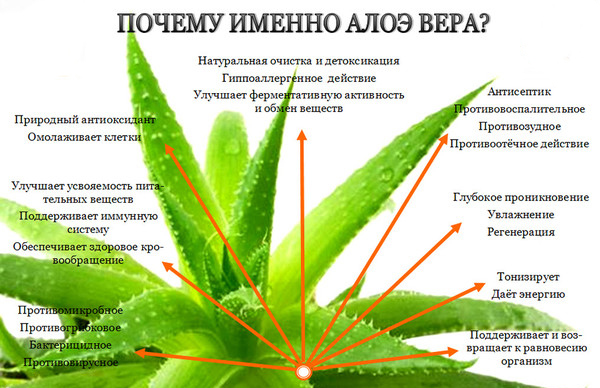
The benefits of aloe vera - The dried flower root has long been considered a talisman. It was placed on chains and worn on the body.
- The plant is used in magic to conduct love ceremonies. It is believed that the agave has the ability to attract love.
- Blooming aloe promises great joy.
The magical abilities of the flower, multiplied by its medicinal properties, make aloe an indispensable indoor plant, which should be in every home.
Common Growing Questions
Aloe is a priceless plant endowed with a mass of beneficial properties. Before using drugs from the agave, it is recommended to consult a doctor, since the plant has a number of contraindications for use.

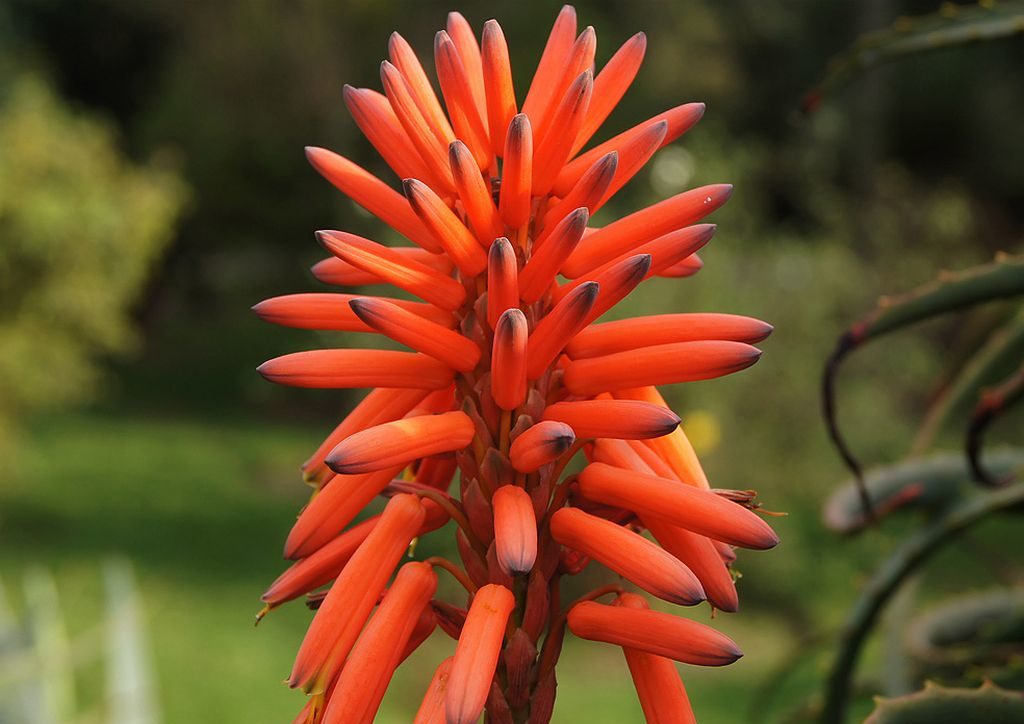

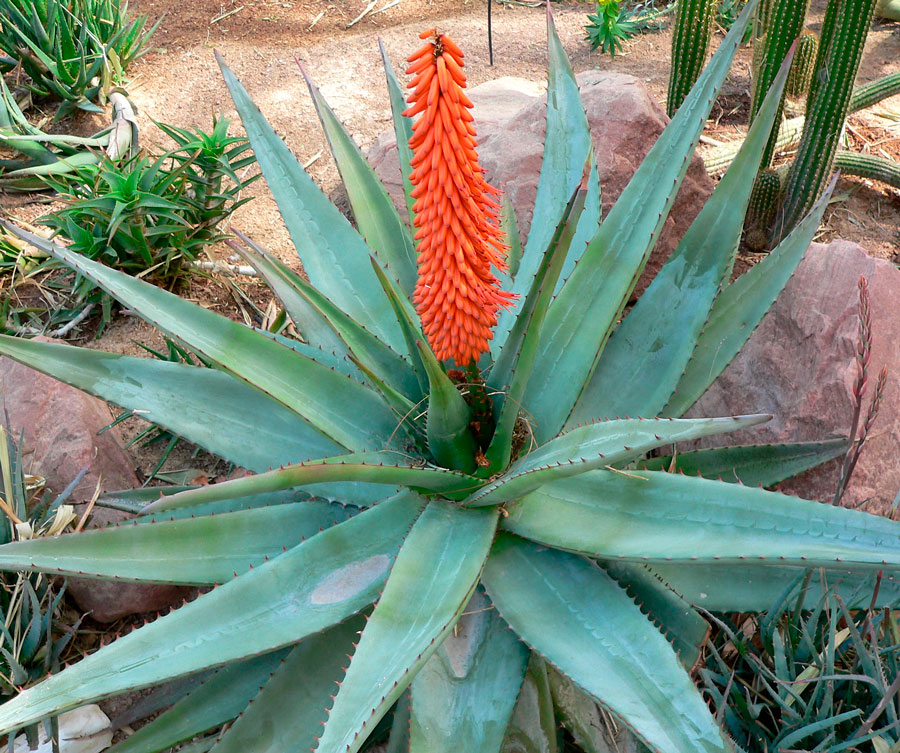
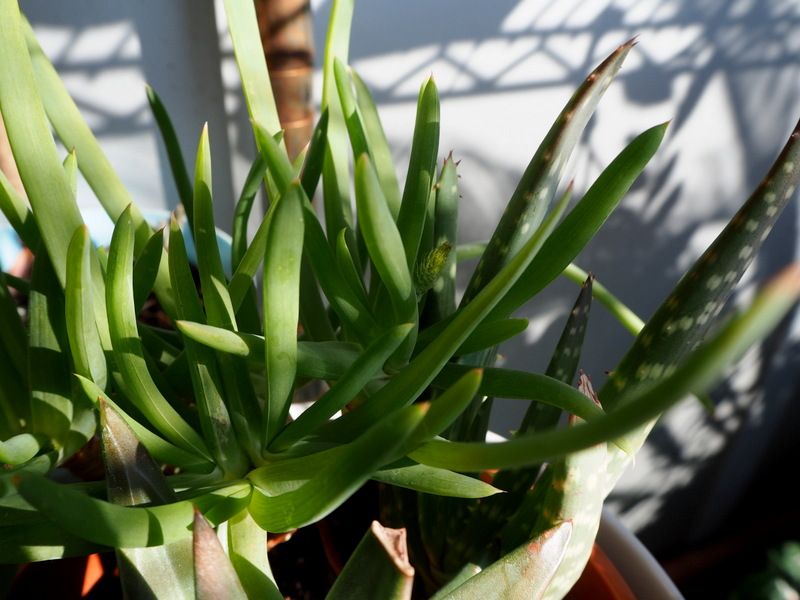

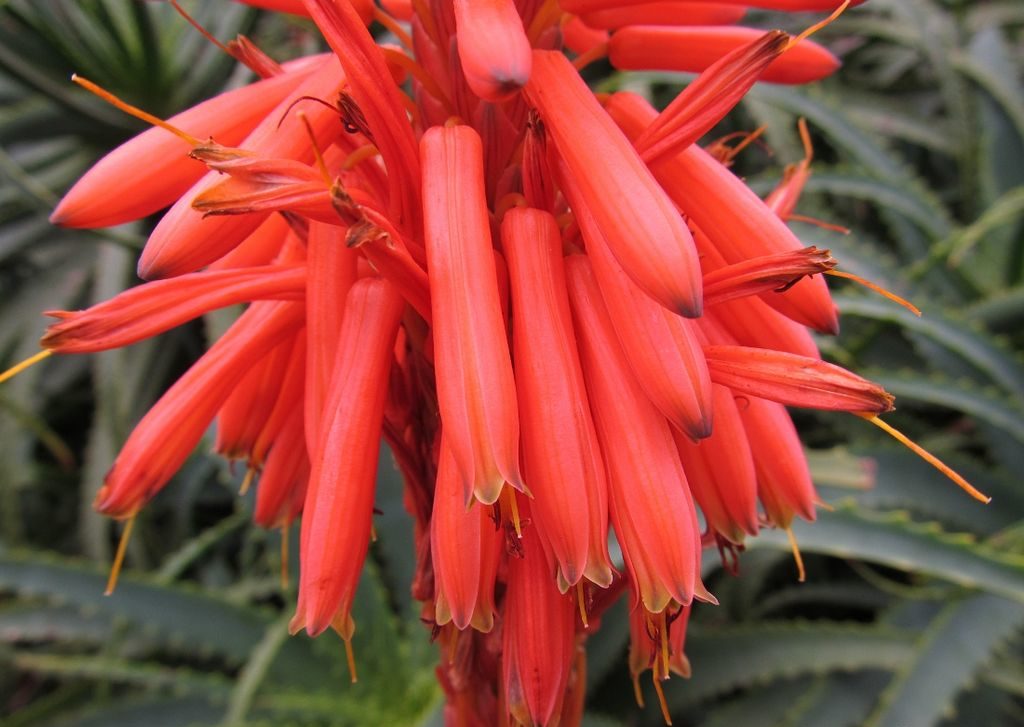
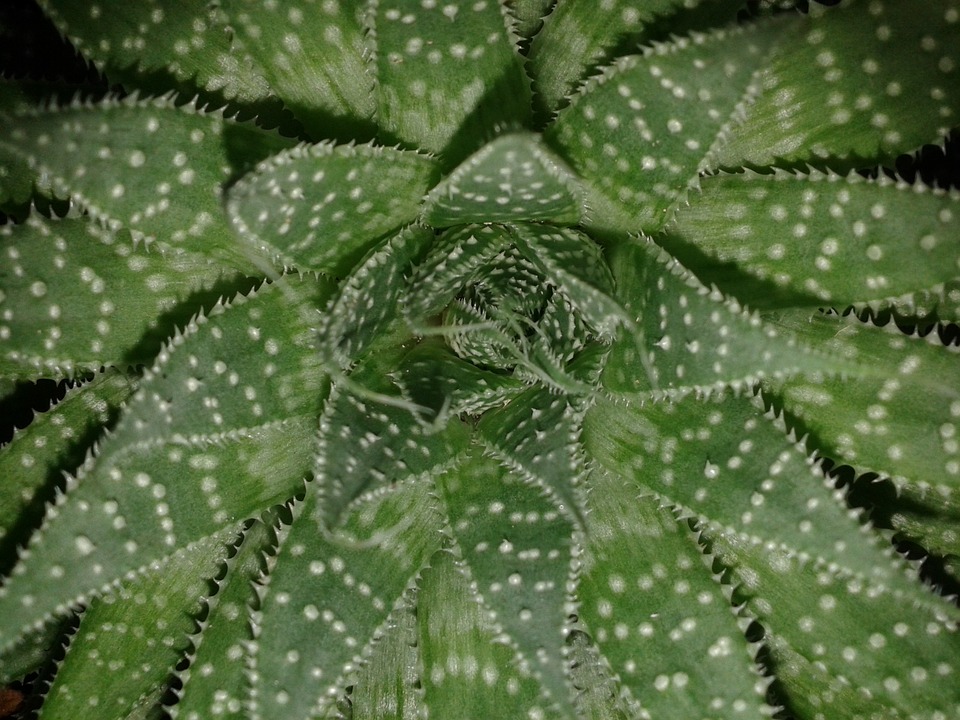

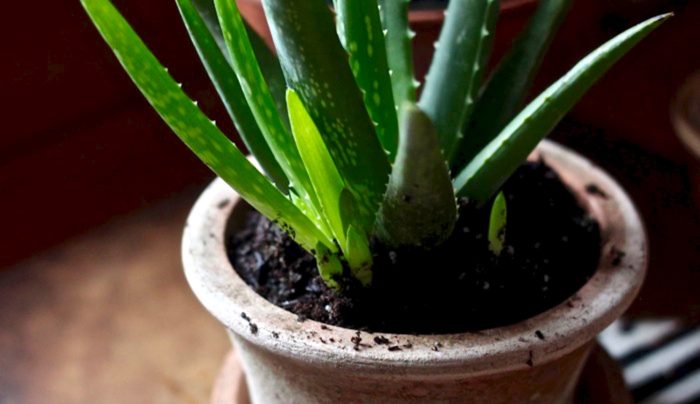



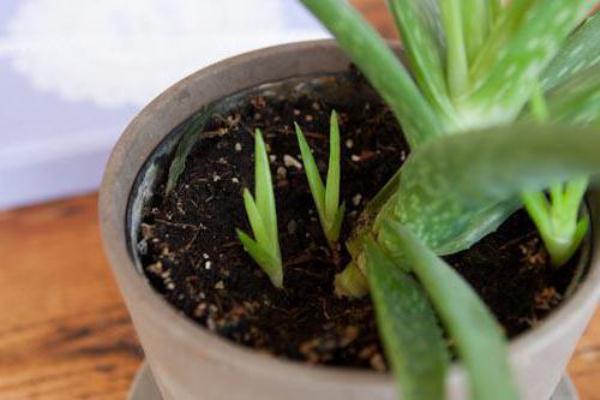
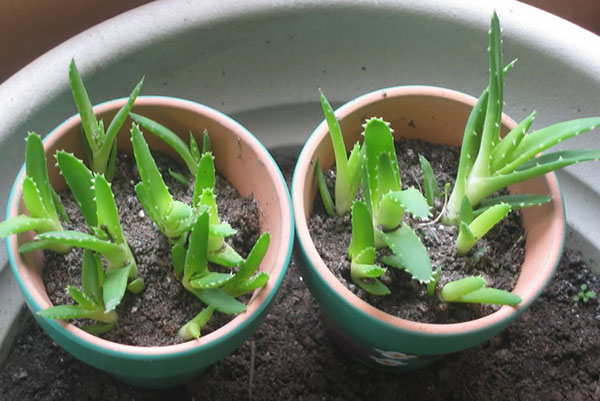
 Sow in the ground, without seedlings: 10 beautiful and unpretentious flowers
Sow in the ground, without seedlings: 10 beautiful and unpretentious flowers Platicodon planting and outdoor care
Platicodon planting and outdoor care Hosta - planting and care in the open ground in the Urals
Hosta - planting and care in the open ground in the Urals Oleander - care and growing at home
Oleander - care and growing at home